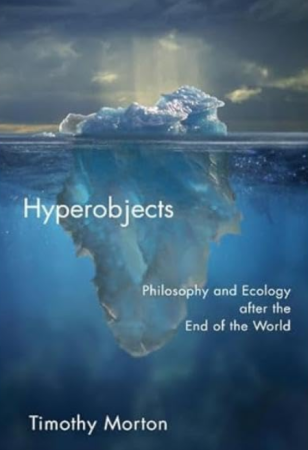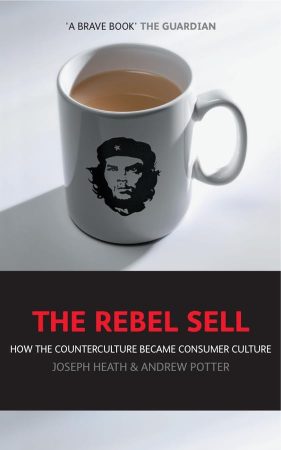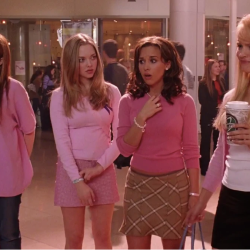Marx and Engels argued that capitalism’s relentless drive for profit would ultimately lead to exploitation and overproduction, causing economic crises where supply outpaces demand, and an impoverished working class would eventually rise to overthrow capitalism and replace it with socialism. It didn’t pan out like that. It turns out capitalism’s flexibility and adaptability have been pretty good at preventing the collapse Marx and Engels predicted. Instead of imploding, capitalism has continually found ways to transform itself and survive. So far. But is it facing another crisis, coming at it from a different angle?
The phrase ‘Pop Will Eat Itself’ was coined in a 1986 article by music journo David Quantick, in the once mighty NME. Quantick argued that pop culture, especially music, had become increasingly self-referential, borrowing from and remaking itself to the point of exhaustion. He predicted that pop would become so obsessed with its own past that it would begin to almost literally ‘eat itself’ — consuming its own ideas, innovation, creativity, and so on. Bless. He had just discovered postmodernity.
Not long after that headline, grebo-punksters Pop Will Eat Itself (PWEI) then adopted the tag in a nod to this critique, owning the irony and being quick off the mark in adopting sampling and hip hop into their racket, eating the very phenomenon Quantick was bemoaning. Of course, recombination has always been how new forms emerge. In nature, organisms evolve by passing on advantageous traits that arise from mutations and genetic recombinations. Similarly, in culture, new ideas, technologies, and products always emerge from recombining existing elements, with the most successful combinations thriving and being passed on. But forty years down the road into the post-modern project, it’s beginning to feel like pop culture has indeed eaten itself, and we’re teetering on the precipice of something akin to an implosion, a potential extinction event for culture and another beginning-of-the-end for consumer capitalism as we know it.
Hear me out… mainstream culture (blurry as it is in postmodernity) has always relied on an endless cycle of commodification
Up until recently, it has been served pretty well by the absorption of counterculture and innovation from the fringes, but those days might be numbered. Increasingly, culture is trapped in a negative feedback loop of its own making and ‘collapsing’ under the weight of its own artificiality.
What do I mean by collapse? Well, the idea of AI ‘eating itself’ is already starting to gain traction. This is yer classic ‘model collapse’ — the gradual but inevitable degradation of content as the models that produce it increasingly rely on their own outputs rather than original inputs from human sources. This creates a spiral of death where the quality, originality, and depth of content continuously decline, leading to a ‘collapse’ of the model’s value. Spend five minutes over on LinkedIn and you will never be able to unsee it.
In a recent New York Magazine article, Neil Clarke, founder of Clarkesworld magazine, discussed the rise of ‘slop’ — the glut of low-quality, AI-generated content flooding the internet. He noticed this in 2022, when his magazine was suddenly overwhelmed by AI-generated science fiction stories; that seemed to come from the same unimaginative prompt. This deluge of content, created by people looking to make a quick buck using the just launched ChatGPT, is now prevalent anywhere you look. And in places where you can’t look. It’s like what the eco-philosopher Timothy Morton calls the ‘hyperobject’. These are ‘entities’ that are so pervasive that they transcend specific locations or moments in time, making them difficult to grasp or comprehend fully. He gets a bit esoteric, calling these phenomena ‘… of such vast temporal and spatial dimensions that they defeat traditional ideas about what a thing is in the first place.’
He also throws in some weird quantum theory, albeit slightly superfluous, but we get his basic thesis. But that’s not the big issue. The internet hyperobject has been full of slop for a while.
One pivotal clue that points us at the imminent crisis of capitalism 2.0 is in The Rebel Sell by Joseph Heath and Andrew Potter. Published in 2004, the book explored the relationship between counterculture and consumerism, arguing that what is often seen as rebellion is quickly absorbed and commodified by the very system it claims to oppose. They called this model of the ‘pump of capitalism’. Counterculture movements, rather than posing a threat to consumer capitalism, actually fuel it, creating new markets and products and turning countercultural innovation into commercial opportunities. This cycle allows capitalism to remain dynamic and ever-evolving, feeding off the desire for differentiation and ‘authenticity’, absorbing dissent, repackaging it, and selling it back to the masses as a new form of individualism. Essentially, mainstream and counter cultures are two sides of the same coin.
It’s a difficult theory to test, except if the pump were to break down in the real world. If counterculture — or innovation at the edges of culture — were to disappear or become so assimilated into the mainstream that no new forms of dissent or cultural innovation could emerge, it could lead to a model collapse of consumer capitalism.
The (quaint) modernist concept of ‘selling out’ implied that an artist, subculture, or countercultural figure had compromised their ‘authenticity’ for commercial gain, betraying their values to cater to the mainstream. This was a negative, an admission that the individual’s work or ethos was no longer genuine but a commodified version designed for mass consumption. The tension between staying true to your roots and selling out fuelled much of the rebellious edge in past countercultures. Spoken like a true misty-eyed GenXer, I know. However, in the current milieu — especially on places like TikTok and Instagram — this concept of ‘selling out’ has almost completely evaporated. For most of today’s creator economy, selling out is the goal from the outset — in the sense of securing brand deals, partnerships, and sponsorships. The pursuit of virality and monetisation is baked into the creative process from the very beginning.
For advertising planners, we’ve always gone out to the fringes to look for the bits of subculture bubbling under that would be ripe for commodification and mass consumption
Once it has been incorporated then the original innovators go back out to the edge again, and the cycle continues. These days, the interesting things are so much harder to find (there must be something out there), but it’s a bit like going to one of these urban fish farms. There’s one in the middle of an industrial estate near me. Punters pay for the illusion of catching your fish. It takes about 5 minutes, the fish are throwing themselves at the hooks just to get out of the hell-hole of a pond.
There is no counterculture that exists before commodification, because commodification is the goal from the off — like our demented trout, these creators are actively courting the mainstream and searching for ways to sell out from day one. There is no pre-commodified state to be co-opted.
In something like Mr Beast Inc., the audience and the platforms are all part of an endless loop of self-referential commodification. The creators’ value is no longer tied to who they are or what they do but how well they can package and sell their simulated identity. The distinction between the real Mr Beast and the hyperreal Mr Beast no longer matters.
Ah, but what about gamer culture, Eaon? Is that not the new frontier? Well, it’s been largely ignored by mainstream marketing, I’ll give you that, but as of 2020 numbers, the global video game industry was valued at around $180 billion, bludgeoning the combined revenues of both the global movie industry and the music biz. So, to call it a subculture is a stretch.
One glimmer of rebellion appeared recently — emerging from the unlikely source of the AI slop we talked about earlier. In what shall henceforth be known as The Great Bot’n’Roll Swindle (© me, 2024), one Michael Smith used a combination of AI-generated music, assumed artist ‘names’ and bots to generate billions of fake song streams, swindling Spotify and Apple out of close to $10 million in royalties. Smith used his creations to artificially inflate streaming numbers. Cash from chaos, indeed. And he nearly got away with it, but just got nicked and is facing charges of wire fraud and money laundering.

Is AI-generated music fake or authentic? The question collapses into Baudrillard’s idea of hyperreality — a state where the distinction between the real and the simulated no longer exists. AI music is not simply a copy or imitation; it is a simulacrum — an imitation that has no original. In this sense, the music is neither fake nor authentic, because it is what it is a product of algorithmic processes, detached from the traditional notions of artistic creation, yet fully accepted as a new form of reality. In hyperreality, authenticity becomes irrelevant, as all forms of culture and production (including AI music) are simulations, and we live within these simulations without concern for their origins. So it’s the most zeitgeisty thing going on at the edges. Although what we do with this, I’m not sure, but I’d bet that millions of indie artists without the slightest hope of a thousand streams are looking on saying, ‘I wish I’d thought of that’.
This current dearth of rebellion poses a massive threat to mainstream culture, media, and advertising
To avoid the incoming collapse of consumer capitalism, paradoxically, we need to uncover more stuff that is absolutely not for sale, so that we can co-opt, commodify, and sell it back.
When the process of commodification happens too early, mainstream culture has no edges to absorb and repurpose. When everything and everyone is for sale from the beginning, it undermines the engine that drives consumerism, short-circuits the pump of capitalism, and collapses the model. The edges of culture are no longer places of authentic rebellion against the mainstream to be absorbed; instead, they become just extremely crowded co-working incubator spaces for marketable personas dreaming of being the next Mr Beast. But even he can’t sell his rotten chocolate bars.
When pop has eaten itself, everything is already commodified and there is nothing left to appropriate. And unless we are careful, this is where we are headed.
Featured image: cottonbro studio / Pexels




































